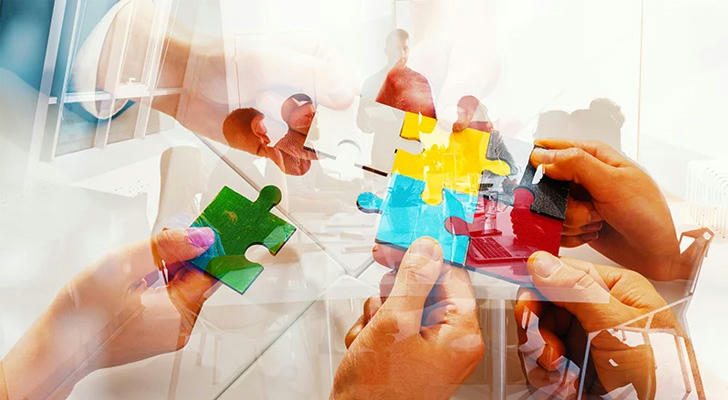Those Who Seem Disconnected Might Actually Double Team Efficiency
In traditional thinking, teamwork is often tied to words like "harmony" and "cohesion." Most assume that groups with constant interaction and tight coordination achieve goals faster. Yet recent studies reveal that individuals who appear distant, quiet, or even "out of sync" might hold the key to boosting a team’s productivity. The logic behind this phenomenon is reshaping how we understand collaboration.

1. Independent Thinking Sparks Innovation
Highly social team members often default to groupthink, while those who seem withdrawn tend to maintain stronger intellectual independence. A 2018 Harvard Business School study found that teams with at least 20% non-conformist members produced 47% more breakthrough ideas in innovation-driven projects compared to homogenous groups. This gap arises because non-conformists face fewer mental constraints, allowing them to approach problems from unconventional angles.
Apple’s early days illustrate this principle. In the 1980s, engineers insisting on radical design ideas were labeled "outsiders." They rejected mainstream closed-system architectures, instead pioneering graphical interfaces and mouse controls. These "disconnected" ideas ultimately revolutionized personal computing.
A similar pattern appears in theoretical physics. During Albert Einstein’s tenure at the Swiss patent office, his isolation from academic circles shielded him from the era’s obsession with classical mechanics. This mental distance enabled him to dismantle existing frameworks and develop the theory of relativity.
2. Cutting Social Overhead Boosts Focus
Excessive socialization can silently drain productivity. UCLA’s Team Dynamics Lab tracked 132 workgroups and discovered teams with over 45 minutes of daily nonessential chatter took 2.3 days longer to complete tasks. Less social members conserve collective focus by minimizing distractions.
A multinational tech company’s remote work experiment supports this. Over six months, engineers could choose their collaboration style. Those opting for limited real-time communication delivered 31% more code with 22% fewer bugs than peers in high-interaction groups. By relying on structured asynchronous updates, they maintained clarity without fragmenting attention.
Creative industries see this effect magnified. A top architecture firm found that letting designers work independently during early concept phases, then merging ideas later, cut project timelines by 40% compared to constant group brainstorming. This "isolate first, integrate later" approach balances deep thinking with teamwork.

3. Cognitive Diversity Strengthens Decisions
Surface-level harmony often masks blind spots, while teams with cognitive diversity spot risks others miss. Research from London Business School shows decision-making groups with non-conformist members identified 58% more potential pitfalls than uniform teams. The clash of perspectives creates a safety net.
A pivotal moment in aerospace history proves this. During Apollo 11’s mission, NASA deliberately included engineers who challenged consensus. One dissenting expert insisted on thickening the heat shield—a move deemed unnecessary by most. Yet this adjustment prevented catastrophic overheating during reentry, saving the crew. Such "constructive friction" remains vital in high-stakes projects.
Biology offers a parallel: Norway’s fishing industry boosts sardine survival during transport by adding a few catfish to tanks. The intruders keep the school alert and active. Similarly, non-conformists in teams act as cognitive "catfish," disrupting complacency and sparking sharper thinking.
4. Smarter Management Unlocks Potential
Harnessing these benefits requires tailored strategies. Google’s HR lab found teams using "differentiated collaboration" models—adapting workflows to individual rhythms—achieved 35% more consistent performance than rigidly structured groups.
A manufacturing leader’s R&D department offers a blueprint. They created three workspace types: open discussion zones, semi-private pods, and soundproof studios. This setup let engineers choose environments matching their focus needs, resulting in a 127% patent surge post-implementation.
3M’s "15% Time" policy also stands out. By allowing employees to dedicate a portion of work hours to self-directed projects, the company spawned innovations like Post-it Notes. Such systems give quiet innovators structured freedom to excel.

Redefining Team Success
Modern management is shifting from "uniformity" to "dynamic balance." Boston Consulting Group data shows the share of "non-typical" members in high-performing teams rose from 12% in 2010 to 29% in 2023. This reflects a deeper truth: real efficiency comes not from surface-level cohesion, but from strategically blending diverse minds.
Critical to this shift is building systems that convert "lone wolves" into assets. It demands leaders who can spot unique strengths, design flexible collaboration frameworks, and measure success through multiple lenses. When organizations reframe "outsiders" as essential puzzle pieces, teams don’t just work—they evolve.
Like thriving ecosystems needing varied species, great teams thrive on cognitive diversity. The quiet thinker in the corner? They might just hold the breakthrough everyone’s chasing.

